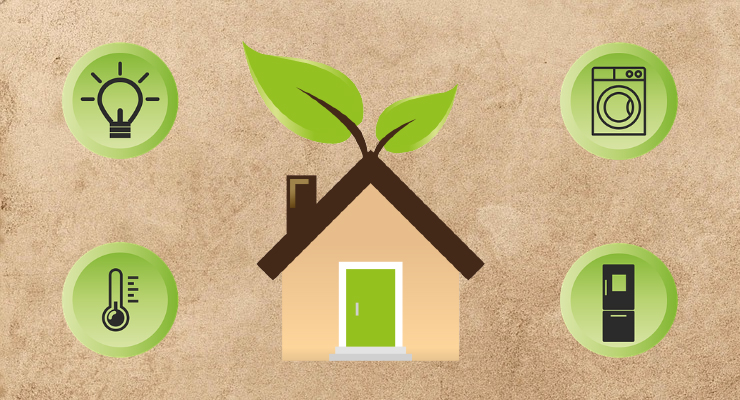With energy costs rising and our environmental impact increasing many people are looking for ways to make their home more eco-friendly. Fortunately, there are some easy steps you can follow to help you move in the right direction by reducing costs and improving the eco-friendly status of your home. Here are our six top tips:
Light your home with energy efficient lightbulbs
This is probably the simplest task you can carry out to make your home more eco-friendly. Energy efficient lightbulbs use up to 75% less energy and can last 10 to 25 time longer than a traditional incandescent bulb. With each lightbulb that you change, your home gets more energy efficient and your savings go up. It’s a simple task but it can make a big difference.
Use Solar Panels for your electricity
According to a report by the Ontario government in 2015, the source of electricity in the province is 58% nuclear, 23% water, 10% natural gas, and 9% solar/wind/bioenergy. While there has been a big reduction in the use of coal, renewable sources still only account for a third of the electricity supply and government regulations to increase their usage only seem to have increased our bills. A solution to both of these issues is to produce your own renewable source of electricity by installing solar panels on your property.
The technology behind solar panels has improved considerably in recent years. They can still work on cloudy days and in most other conditions, although it might be best to clear them of snow sooner rather than later. It is still an expensive initial outlay, over time the investment can pay for itself and there is no better way to ensure completely green electricity for your home.
Have a low-flush toilet
Aside from showering, most of the water used in a home goes straight down the toilet – quite literally. A traditional toilet uses around 6 litres of water with each flush and, with multiple flushes per day, that adds up to a lot of water over the course of a month. A popular way to address this issue is to install a new low-flush toilet, which uses almost a third less water with each flush. Many new homes will have these installed by default, while older homes may need an upgrade.
As the upgrade can be quite expensive, particularly when the cost of labour is added, there is a life-hack that can be used which has a similar effect and costs almost nothing. Take an empty bottle, remove external labels, and fill it with something heavy such as stones or sand. Empty the toilet tank and place the bottle in the tank, making sure it is not going to interfere with the flushing mechanism. The bottle will now displace the water, meaning less water will be required to fill the tank. Voila – a more eco-friendly toilet in minutes!
Use a smart thermostat
It’s very easy to turn your heating on for too long or to put it higher than it needs to be, and that wastes a lot of energy and money. Fortunately, smart meters are here to help. There are a wide range of smart thermostats on the market but there are many features that are more or less standard now. These include being able to control your heating remotely from a smartphone, personalized settings for different members of your family; and allowing the thermostat to set the optimum settings in order to heat your home in the most efficient way.
With so many features available, you can heat or cool your home far more efficiently than with a standard thermostat and that will save you lots of energy and a fair amount of money as well.
Insulate your home
The less energy you use, the more eco-friendly your home will be. It’s a simple equation and that’s what makes this tip one of the most important for improving the eco-friendliness of your property. One of the biggest ways our homes lose energy is through poor insulation and drafts from windows and doors. The more heat that is lost in the winter, the harder your heating system has to work warm your home. It works the same in summer, when the benefit of air conditioning can be lost through leaky or open windows and doors.
Hire a home renovation expert to assess your home’s insulation, windows and doors and make the appropriate updates so you can keep the heat in during the winter and the colder air in during the summer.
Use low-energy appliances
There are low-energy versions of most appliances, particularly major appliances like fridges, freezers, ovens and dishwashers. By moving to a new, energy-efficient model, you can reduce your home’s energy needs. Likewise, the way that you use your appliances can make a difference and make your home more eco-friendly. For instance, avoid rinsing your dishes before putting them in the dishwasher and only start the cycle when the dishwasher is full. Similarly, you can reduce the energy your oven uses by keeping the door closed as much as possible. Every time the door is opened, the oven loses heat and that gets worse the longer it is left open.
When replacing your appliances, you can also choose an eco-friendly way to dispose of the old appliances. Many municipalities offer collection services and they can often be free, as is the case in Markham, for example, if your appliance is still working, and Toronto in any circumstance.




